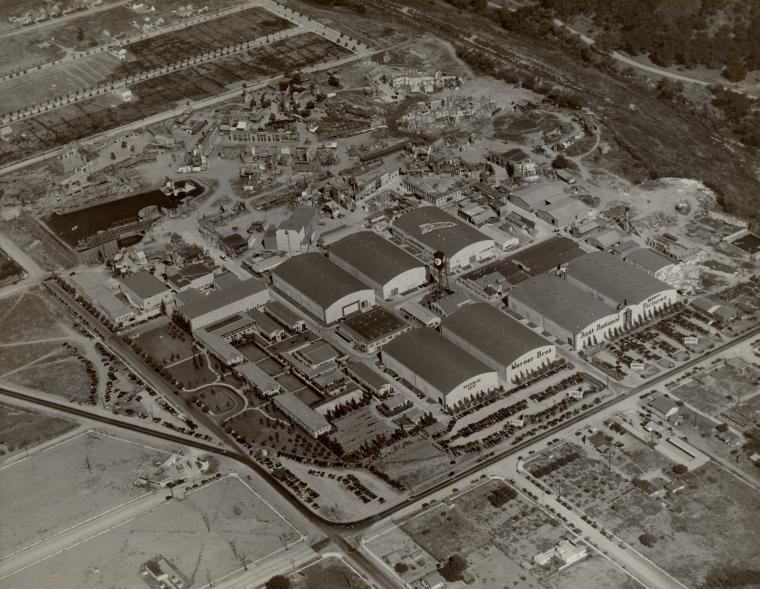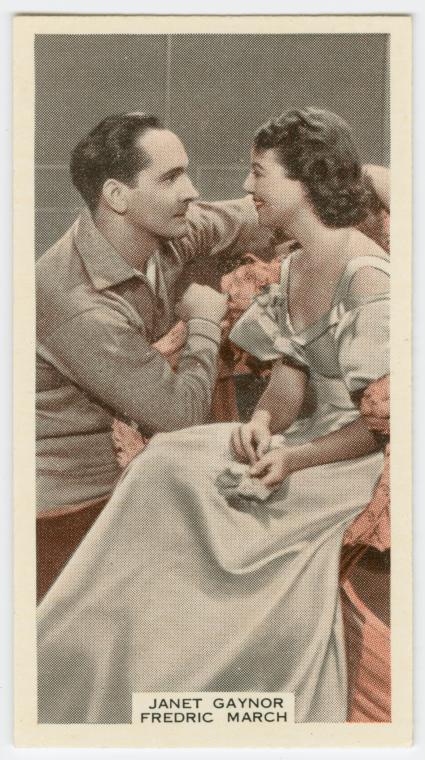24 Frames per Second
Evelyn Waugh and His "Most Offensive Work"
October 28 marks the birthday of Evelyn Waugh: novelist, journalist, biographer, professional curmudgeon. He was a versatile author whose work in one genre often informed another. His reportage in Abyssinia (modern-day Ethiopia and Eritrea) influenced his travelogue Waugh in Abyssinia and his novel Scoop. (Its original full title was Scoop: A Novel About Journalists.) Accusations of stolen likenesses in Vile Bodies prompted his Daily Mail op/ed “People Who Want to Sue Me,” which in turn likely inspired the author’s note beginning his most famous work, Brideshead Revisited: “I am not I; thou art not he or she; they are not they.” I’ve been a fan of Evelyn Waugh ever since high school, when I read his The Loved One in English class. With a caustic remark for every occasion, he seemed, like Dorothy Parker, to begin every morning by brushing his teeth and sharpening his tongue. So as the anniversary of his birth approaches, I’ve been thinking a lot about Waugh, literature, and Hollywood.
While in Hollywood consulting on a potential film adaptation of Brideshead that never materialized, Waugh observed American West Coast culture up close. His reaction was...not flattering. To be fair, he had a bad impression of Americans going into the visit, suggesting in a letter to his agent that “not...six Americans will understand [Brideshead].” [1] His time in LA led to the writing of The Loved One: An Anglo-American Tragedy. In a 1948 letter, Waugh described the ground he wished to cover with this novel:
The ideas I had in mind in writing were: 1st & quite predominantly overexcitement with the scene of Forest Lawn [a local mortuary]. 2nd the Anglo-American impasse — ‘never the twain shall meet,’ 3rd there is no such thing as an American. They are all exiles uprooted, transplanted & doomed to sterility. The ancestral gods they have abjured get them in the end. I tried to indicate this in Aimée’s last hours. 4th the European raiders who come for the spoils & if they are lucky make for home with them. 5th Memento mori, old style, not specifically Californian. [1]
Waugh’s LA novel mocked Americans as vacuous, uncultured saps, easy marks for the nearest British expat. Its ending is classic Waugh dark comedy, doubtless the reason why Waugh called it his “most offensive work.” [1] He anticipated a harsh backlash upon publication, telling Randolph Churchill (son of Winston), “Give my love to any friends you see in USA. There will be none after the publication of The Loved One." [1] He also asked his agent to avoid publishing the book in communist countries, fearing it would be used as anti-American propaganda. [1]
While thinking and reading about The Loved One, my mind turned to the long list of talented authors who all seemed to congregate in Hollywood in the years between the two world wars, looking for (usually successfully) a buck and (usually unsuccessfully) some measure of artistic fulfillment. Many went on, like Waugh, to process their experiences through fiction.

If you wandered the Hollywood studios during 1930-1939, you would find a number of literary luminaries hammering away at a script: Scott Fitzgerald, Nathanael West, Dorothy Parker, William Faulkner, Dashiell Hammett, Aldous Huxley, John O’ Hara, Raymond Chandler, John Dos Passos, and James Agee all worked during this time as scriptwriters. Some met with success: Parker and Budd Schulberg helped write A Star is Born, which was nominated for the Academy Award for Best Screenplay, while Faulkner contributed to both The Big Sleep and To Have and Have Not. Others, most notably Fitzgerald, were profoundly unhappy with the treatment of their work, or like West, “gave them a fair day’s work” [2] but as little emotional investment as possible. In a period of economic instability, the pay was decent and reliable. “I want nothing from Hollywood but money,” Parker said, “and anyone who tells you that he came here for anything else or tries to make beautiful words out of it lies in his teeth.” [2]
Writers quickly learned that they were “the most unimportant cog in the Hollywood wheel.” [2] Fine recounts a hunting trip attended by William Faulkner, director Howard Hawks, and Clark Gable. At the time, Faulkner had published The Sound and the Fury and As I Lay Dying, and was working on Light in August.
“Mr. Faulkner,” Hawks remembers [Gable] saying, “what do you think somebody should read if he wants to read the best living writers?” Faulkner answered, “Ernest Hemingway, Willa Cather, Thomas Mann, John Dos Passos, and William Faulkner.” There was a moment’s silence “Oh,” Gable said, recovering, “do you write?” “Yes, Mr. Gable,” Faulkner replied. “What do you do?” [2]
Such ego-dashing encounters disillusioned many authors with the Hollywood experience. But, like Waugh, they used this time as fodder for a number of (hopefully cathartic) novels, which you can read right here at NYPL. Despite — or because of — their intense criticism of LA life, some were subsequently adapted into film, such as the 1975 classic The Day of the Locust.
| Evelyn Waugh | The Loved One | Book | Film Adaptation |
| Scott Fitzgerald | (The Love of) The Last Tycoon | Book |
| Aldous Huxley | Ape and Essence | Book |
| After Many a Summer | Book | |
| John O’Hara | Hope of Heaven | Book |
| Budd Schulberg | What Makes Sammy Run? | Book | Television Adaptation |
| Nathanael West | The Day of the Locust | Book | Film Adaptation |
If you’d rather read their 9-5 work, you can find scripts written by Dorothy Parker, Nathanael West, William Faulkner, Raymond Chandler, James Agee, and others in their entirety in the American Film Scripts Online database. This e-resource is available at any of NYPL’s four research libraries. And of course, if film is your thing, be sure to check out the library’s Billy Rose Theatre Division at the Library for the Performing Arts — some of their scripts have even been digitized.
To learn more about this period of Hollywood history, try Tom Cerasulo’s Authors Out Here: Fitzgerald, West, Parker, and Schulberg in Hollywood, Richard Fine’s West of Eden: Writers in Hollywood, 1928-1940, or Tom Dardis’s Some Time in the Sun.
[1]The Letters of Evelyn Waugh. Ed. Mark Amory. New York: Penguin Books, 1980. Quotations from pages 177, 265-266, 269, 275, and 295.
[2] Richard Fine. West of Eden: Writers in Hollywood, 1928-1940. Washington: Smithsonian Institution Press, 1993. Quotations from pages 100, 106, 107, and 156.
Read E-Books with SimplyE
 With your library card, it's easier than ever to choose from more than 300,000 e-books on SimplyE, The New York Public Library's free e-reader app. Gain access to digital resources for all ages, including e-books, audiobooks, databases, and more.
With your library card, it's easier than ever to choose from more than 300,000 e-books on SimplyE, The New York Public Library's free e-reader app. Gain access to digital resources for all ages, including e-books, audiobooks, databases, and more.
If you don’t have an NYPL library card, New York State residents can apply for a digital card online or through SimplyE (available on the App Store or Google Play).
Need more help? Read our guide to using SimplyE.


Comments
writers in hollywoodd
Submitted by jeffrey manley (not verified) on November 2, 2016 - 9:51am
Re: writers in hollywood
Submitted by Meredith Mann on November 2, 2016 - 4:26pm